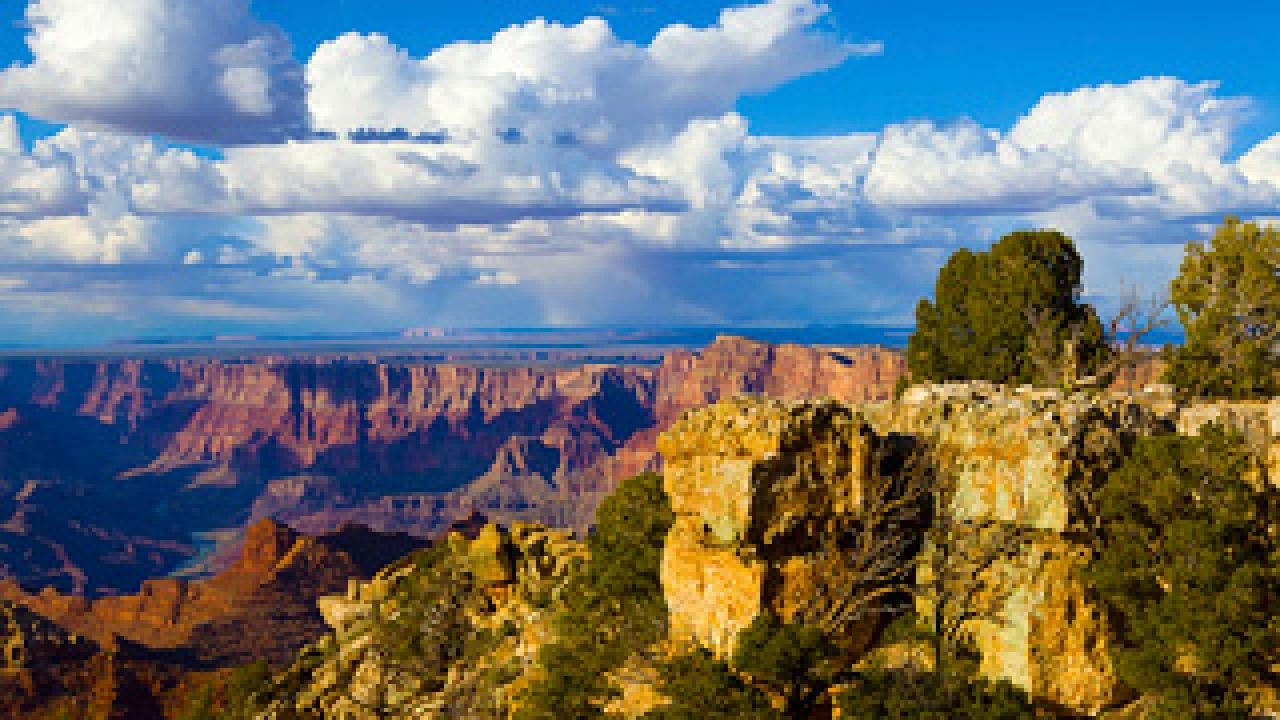From the South Rim of the Grand Canyon to the peaks of Denali and the swamps of the Florida Everglades, the IMPROVE network, overseen by the Crocker Nuclear Laboratory at the University of California, Davis, provides air quality data to help enhance the skies over national parks in the United States. This year marks the 25th anniversary of the measurement network, and its first expansion beyond North America’s borders — to South Korea.
Currently, IMPROVE (Interagency Monitoring for Protected Visual Environments) instruments measure air quality at about 165 sites in the U.S. and two in Canada, in addition to the new site in South Korea.
The U.S. sites are considered “class 1” areas, which are federal lands given the highest level of air quality protection under the Clean Air Act. They include some of the country’s most beloved national parks.
“Grand Canyon, Yellowstone, the Smokies, the Everglades … you can hardly name a big national park that doesn’t include one of our sampling sites,” said Chuck McDade, IMPROVE program manager at UC Davis.
In South Korea, UC Davis partnered with the National Institute of Environmental Research and Hankuk University of Foreign Studies in Seoul to install an IMPROVE air sampler at Baengnyeong Island, just east of China. IMPROVE instruments will measure fine particles that drift to the island from the Chinese mainland.
“Transport of air pollution from the Eastern Asian Continent is a concern to neighboring countries such as South Korea and Japan,” said Taehyoung Lee, an assistant professor of environmental science at Hankuk University of Foreign Studies who used IMPROVE data while a postdoctoral scholar at Colorado State University. He worked closely with UC Davis and Korea’s NIER to establish the IMPROVE site on the island.
IMPROVE sampling stations are designed and installed by the Air Quality Group at UC Davis Crocker Nuclear Laboratory. The stations filter haze-forming particles from the air. Local operators then ship the samples to UC Davis for analysis.
“The IMPROVE program gives us high-quality data to identify the causes of visibility impairment in our parks and track progress toward returning visibility to unimpaired conditions,” said John Vimont, chief of research and monitoring for National Park Service Air Resources. “UC Davis’ commitment to high-quality science has helped make the program a success.”
Joonyoung Ahn, a scientist in the Air Quality Research Division at NIER, said IMPROVE technology and techniques will provide new data about pollution sources in Asia — information that likely will be useful in the West, as well.
“IMPROVE measurements are of great value to help us understand pollutant transport from a variety of source regions to Korea and to more distant regions, such as the western United States,” Ahn said.
The network’s measurements of air quality data are publicly available. They are primarily used by states to comply with the Regional Haze Rule, which the U.S. EPA established in 1999 to improve visibility in national parks and wilderness areas. The data are also used and interpreted by a wide variety of scientists, agencies, stakeholders, and the general public for everything from climate change and air pollution modeling to epidemiology.
The IMPROVE network is funded through the U.S. National Park Service, the Environmental Protection Agency, the U.S. Forest Service, and the U.S. Fish and Wildlife Service.
About IMPROVE
The IMPROVE network was established in 1987 by the Environmental Protection Agency and the Federal Land Managers, a group made up of the U.S. National Park Service, U.S. Forest Service, U.S. Fish and Wildlife Service, and the Bureau of Land Management. Crocker Nuclear Laboratory at UC Davis has been the primary contractor for this network since its inception.
About the Crocker Nuclear Laboratory at UC Davis
Crocker Nuclear Laboratory is home to a 76-inch cyclotron, or particle accelerator, that was built in 1965. The UC Davis cyclotron was once used for air pollution research, but the IMPROVE network now uses an X-ray fluorescence system. The Air Quality Group continues to be housed at CNL, and its research has helped improve visibility at national parks. The cyclotron is used to simulate the radiation effects experienced in space missions and to treat eye cancer.
Media Resources
Kat Kerlin, Research news (emphasis on environmental sciences), 530-750-9195, kekerlin@ucdavis.edu
Chuck McDade, Crocker Nuclear Laboratory, (530) 752-7119, cemcdade@ucdavis.edu
